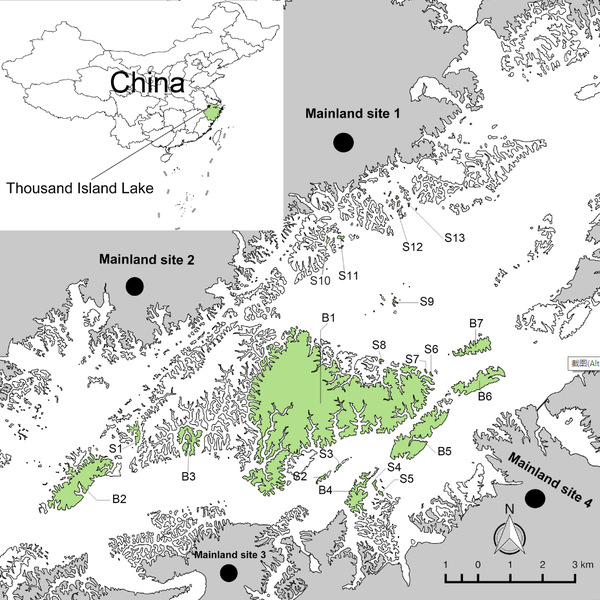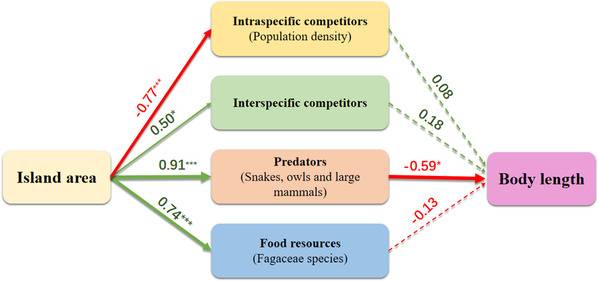Habitat fragmentation is one of the leading causes of biodiversity loss. The body size in terms of body mass and body length is associated with many biological traits, such as life history strategy and interspecific competition. Differences in space and time in body size are also the outcome of adaptive evolution. As compared with mainland species, island species have undergone remarkably striking changes in shape and body size.
Prof. DING Ping at the Zhejiang University College of Life Sciences led a study on the mechanisms underlying these changes. On the basis of the "island rule" and the rapid morphological change in animals, Ding and his team conducted field surveys in the Thousand Island Lake with a view to probing into the story behind the rapid morphological adaptation of island animals in fragmented habitats caused by human activities. Their study was published on November 3 in the journal Diversity and Distributions.

Map of the research sites (4 mainland sites, 7 big islands and 13 small islands) in Thousand Island Lake region, China
In their study, the researchers found that all island populations of Niviventer confucianus had a significantly larger body size than their mainland counterparts. The size of Niviventer confucianus on different islands is also marked by the "island rule". In other words, the island area, rather than island isolation, had positive effects on the abundance of predators, interspecific competitors and food resources, which then produced an indirect impact on the body size of Niviventer confucianus.

Structural equation model (SEM) showing the main drivers of rapid morphological shifts of a rat species on islands in Thousand Island Lake
The multiple linear regression models and the structural equation modeling indicated that predators were a determinant factor for rapid morphological shifts in Niviventer confucianus and that they were also affected by the island area. This study reveals that habitat fragmentation has profound implications for the body size of wild animals and even their evolution, thus providing guidance on working out the strategies for protecting species in fragmented habitats.






